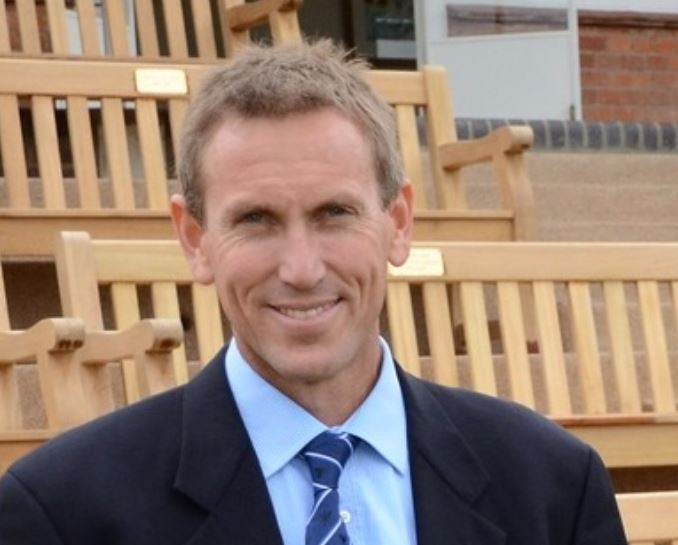After years of getting sucked into long-winded ‘what we did on the holidays’ discussions on day one of the school year, Sherwin’s approach has changed tact markedly.
Now it’s all about intentionally setting the classroom climate ‘from minute zero’, and clearly establishing the routines and behavioural expectations he wants to see from the moment students enter the threshold.
“I don’t want to be over dramatic, but if you don’t make a strong start, then you can find yourself almost wanting to start again, and it can take you some days to pull things back together,” Sherwin, who teaches at Geelong Grammar School in Victoria, says.
“Typically, a lot of teachers I know – and I’ve done this before, as well – you get roped into conversations about holidays, and you want to appear to be a nice guy and easygoing and form relationships, but you’ll find that you’ve lost those crucial early moments.
“So, (as the saying goes) ‘you want to establish as you mean to go on’. It’s a bit cliché, but it’s also, I think, very, very, true in this case.”
By class number two or three, students will have already formed an idea about how all future classes are going to work with you as their teacher, Sherwin flags.
“They’re ready on day one – their antennas are up and they’re looking to receive information.
“So that’s prime time to let them know exactly how it is that [your] classroom is going to operate.”
Hit the ground running
Start by getting to class on time and preferably as early as possible, Sherwin suggests. The classroom itself should already be set up and ready to roll.
“Just so you’re not arriving to a classroom with chairs on the floor and desks all over the place – that it is ready to go,” he says.
“It’s really important that the students see that.”
They might seem simple measures, but Sherwin assures they pack a powerful punch in indicating to students that this is an environment where they can feel safe, calm and will succeed if they put in the hard work.
“Classroom culture … has got its genesis in respect. You want to establish a really respectful culture,” Sherwin says.
“That’s got to start with the teacher, and we can start by showing the students great respect by being there on time, presenting them with a beautifully cared-for classroom.
“Nothing is accidental in this classroom, everything is intentional, including what’s on the walls and what’s on the board, and how the tables and chairs are aligned.
“It’s about establishing early on that ‘this classroom means something’ – if you walk into this classroom, I want to see a shift in your demeanor, I want to see that you're ready to work, because I am,” he explains.

Maths teacher Peter Sherwin used to believe a chat about the holidays to kick off lesson one was a good idea. After careful reflection and feedback, he has now concluded that it sends the wrong message to students and makes life harder for teachers down the track.
Establishing behaviour standards
While a first lesson spent rattling off a long list of rules will only see students ‘glaze over’, the teacher says it’s critical to frontload expectations of behaviour.
You cannot assume (or hope) that children will simply know how to behave in a given situation, he’s concluded.
“I think we spend a lot of time reacting to bad behaviour,” Sherwin says.
“In the last few years, having listened to the likes of Tom Bennett, now I don’t take anything for granted – and the kids will want to know what the boundaries are.
“So, I’ll lay those boundaries out: ‘this is how we behave in this class’, down to how we enter, how we behave whilst I’m modelling questions, how they’re going to participate in the class – ‘these are the types of participation that I’ll be inviting you to experience, and this is the behaviour for each one’.”
Consistency and repetition are key, he adds. As once expectations have been made explicit, it’s routines that will help to embed it all down in the long-term.
“It’s really about being consistent and modelling it. You can’t talk about punctuality and then turn up late yourself,” Sherwin says.
A strong first fortnight
Predictability breeds safety in Sherwin’s lessons. Students know what they need to be doing at every step, and after roughly two weeks he finds his instructional routines become automatic.
Happily, this frees up space for more learning.
“There’s no cognitive load for them to try and work out how it is that they're supposed to behave – every ounce of cognitive load goes towards solving or addressing the problems and the task that have been set for them,” Sherwin says.
Starting a first lesson with an ice-breaker chat about the holidays – albeit in a well-meaning bid to build relationships – sends the wrong message to students, Sherwin has come to realise.
“I’m still having those conversations, I’m just not having them right at the start of lesson one, when it’s prime time to establish the culture.
“I don’t want them to think that the culture of this class is we just chat about what’s just happened on the weekend or the summer holidays…”
Some students are highly skilled at being able to extend such discussions, such that a whole lesson can be effectively lost, the teacher says.
“They’re the one third of your class, who are the outgoing extroverts, but there’s plenty there that just want to get on with it, and they’re just dying to know how [your] class is going to operate – so just get started.
“Sometimes as teachers we miss those quieter students. But by [starting immediately], that suits everyone.”
Being authoritarian will get you nowhere
Respect is earned not by free-flowing chats that eat into instructional time, nor by ruling the classroom with an iron fist, Sherwin clarifies.
Rather, it’s by showing students you are willing to work hard for them and have their back.
“It’s not about being authoritarian, it’s about setting up a really safe environment for them.
“And by explaining it in this way, that everything that we talk about – my behaviour expectations and the routines – are about making this an easy class for you to be in, so that you can come in here and you’re going to feel safe to ask questions.
“You’re not going be laughed at or shouted down or ridiculed, because we have a culture in here that will expel that sort of a behaviour,” he shares.
The latest PISA report found a significant proportion of Australian students learn maths in a disciplinary climate that hinders learning.
Assessing the learning environment in maths lessons across the OECD, the study found 25 per cent of Australian students say they cannot work well in most, or all, classes.
Some 33 per cent do not listen to teacher instruction, while almost a third said the teacher had to wait a long time for students to settle, 20.3 per cent reported this occurred in most classes.
Victorian school leader and author Dr Greg Ashman told EducationHQ at the time he was unsurprised by these findings and that disruptive behaviour was an “ongoing, entrenched problem” in our schools.
“There’s a deeply entrenched ideology that runs through our education faculties and our state education departments that resists doing any of the necessary things to address it,” Ashman said.
At the core of this lies a ‘romantic’ view of childhood, one where children are naturally ‘good’ and any poor behaviour is seen to be the fault of the teacher in some way, Ashman explained.
Last year a Senate inquiry into disruptive classrooms called for the introduction of a ‘behaviour curriculum’ and explicit teaching to stamp out poor behaviour.
“I think every student wants to enjoy a safe environment where everyone has the ability to speak up, ask questions, and take risks,” Sherwin says.
“But they don’t know that necessarily when they walk in your door, they’re just confused.
“So, when you can provide that clarity (around behaviour and expectations), it provides a lot of relief for students.
“And then as a result of that, you earn their respect. I used to think that I'll get their respect because they see I’m a nice guy.”
Stay tuned for an upcoming article in which we unpack the instructional nuances of Sherwin's lessons.















